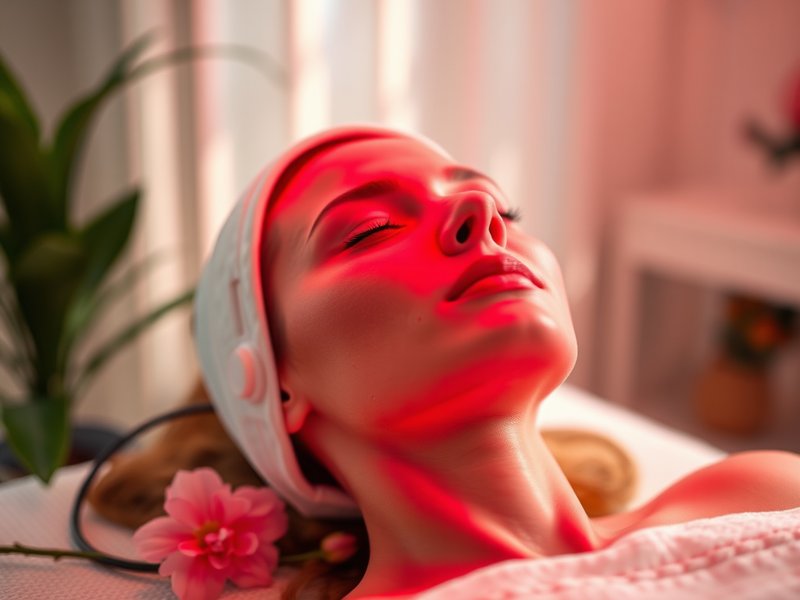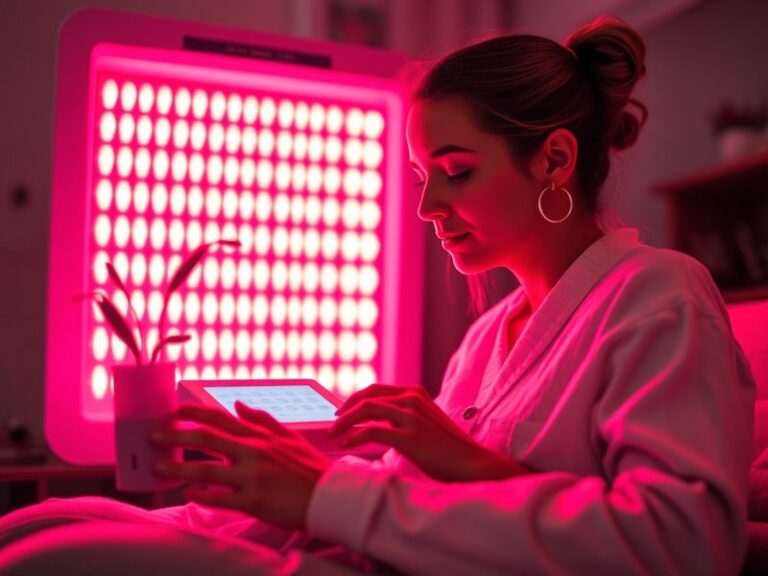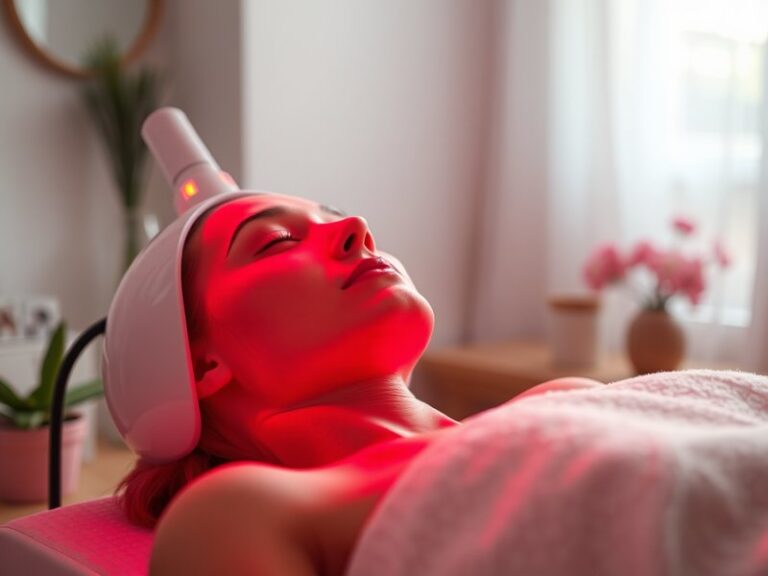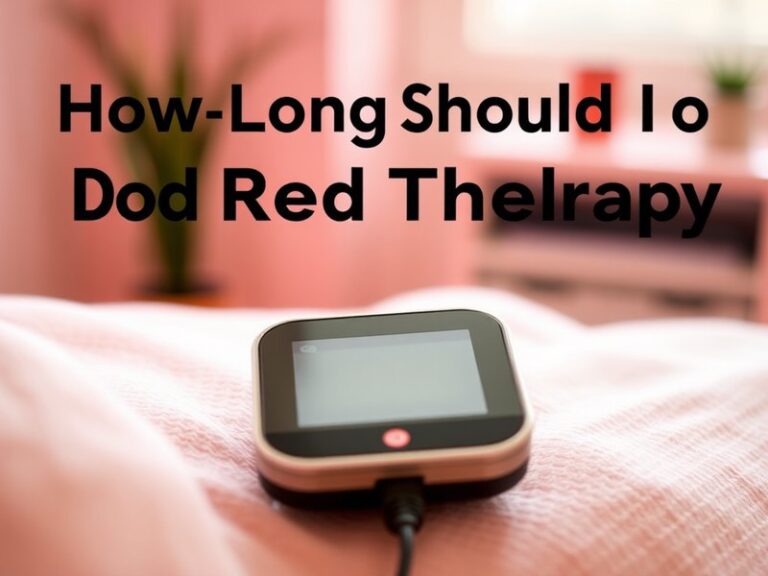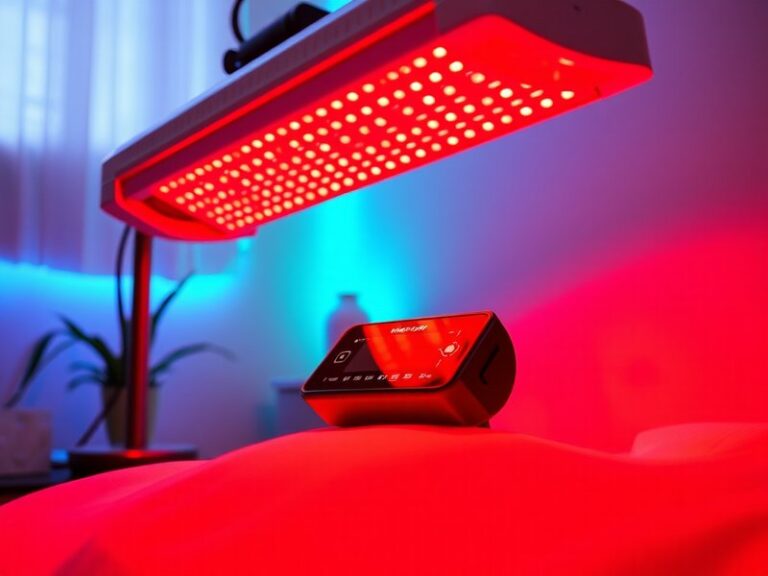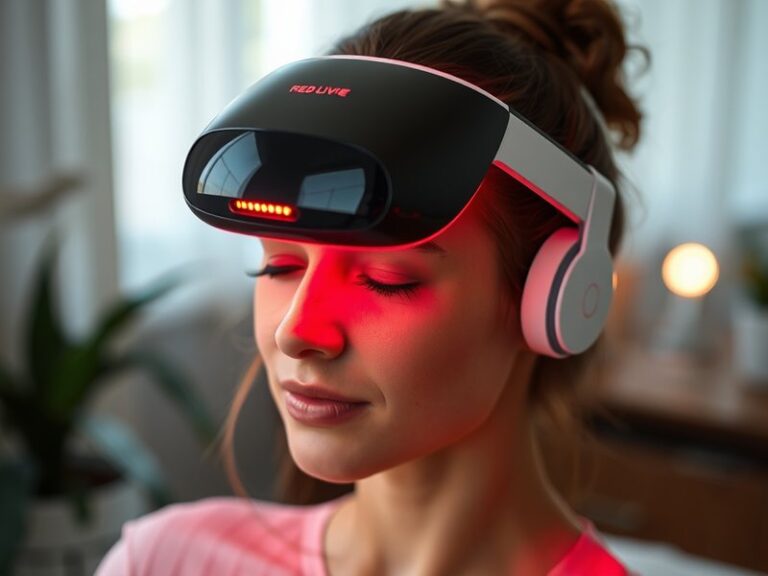Why Is Red Light Therapy Good For Your Skin?
Why Is Red Light Therapy Good For Your Skin?
Have you ever wondered how to rejuvenate your skin naturally?
In recent years, red light therapy (RLT) has gained significant attention for its potential benefits in skincare. This article will explore what red light therapy is, its advantages for skin health, considerations before using it, alternatives available, and frequently asked questions about this innovative treatment.
Key Takeaways
- Red light therapy stimulates collagen production, aiding in skin rejuvenation and repair.
- It can effectively reduce inflammation and improve skin conditions like acne and rosacea.
- Regular use of RLT can lead to significant improvements in skin texture and tone.
What is Red Light Therapy?
Red light therapy involves using low-level wavelengths of red light to penetrate the skin for therapeutic benefits. This non-invasive treatment works by stimulating the cells within the skin to promote healing and regeneration. Traditionally used in clinical settings for wound healing, RLT has made its way into the skincare industry for its anti-aging and rejuvenating properties.
In red light therapy, wavelengths typically range from 600 to 650 nanometers, which researchers have found effective for various skin concerns. The light interacts with the mitochondria in skin cells, enhancing energy production and cellular repair processes, leading to improved skin appearance and health.
What are the Benefits of Red Light Therapy?
Red light therapy offers a variety of benefits that can enhance skin health and appearance. The following sections delve into some of the most impactful advantages of this therapy.
Stimulates Collagen Production
Collagen is a crucial protein that gives skin its structure and elasticity. Red light therapy has been shown to boost collagen synthesis, which can reduce wrinkles and improve skin firmness. A study indicated that participants who underwent RLT experienced a 20% increase in collagen density after several weeks of treatment.
Reduces Inflammation and Acne
Inflamed skin conditions, such as acne, can benefit significantly from red light therapy. The light’s anti-inflammatory properties help calm irritated skin and reduce redness. Research has demonstrated that RLT can decrease acne lesions and promote healing, making it a valuable adjunct treatment for acne sufferers.
Improves Skin Tone and Texture
Red light therapy can enhance skin texture by promoting regeneration and repair. Users often report a more even skin tone and reduced roughness after consistent treatment. By increasing blood circulation, RLT helps deliver nutrients and oxygen to skin cells, resulting in a healthy glow.
Enhances Healing of Scars and Stretch Marks
Not only is red light therapy beneficial for rejuvenating aging skin, but it can also assist in healing scars and stretch marks. RLT promotes faster healing and can significantly improve the appearance of these skin imperfections.
Is it Possible to Use Red Light Therapy at Home?
Many people are interested in using red light therapy for their skin but wonder about the feasibility of at-home treatments. With the rise of portable RLT devices, it is indeed possible to incorporate this therapy into your skincare routine comfortably at home.
What are the Advantages of Using RLT at Home?
The convenience of at-home red light therapy offers several advantages.
Cost-Effective
Investing in a home device can save money over time compared to repeated visits to professional clinics.
Flexible Scheduling
At-home RLT allows users to select treatment times that fit their lifestyles, eliminating the need to coordinate with a clinic’s hours.
Privacy and Comfort
Some individuals may feel more at ease treating skin concerns in the privacy of their own homes, especially during initial usage.
What are the Disadvantages of Using RLT at Home?
While at-home treatments are appealing, there are certain disadvantages to consider.
Device Quality Variability
Not all home devices offer the same effectiveness as professional treatments, so it’s crucial to research and choose reputable products.
Limited Power Output
Some devices may not emit sufficient light intensity or wavelengths needed for optimal results.
What are the Things to Consider Before Using Red Light Therapy?
Before starting red light therapy, it’s essential to consider a few important factors to maximize effectiveness and safety.
Skin Type and Concerns
Different skin types may react differently to RLT. Understanding your unique skin features can help you tailor treatment appropriately.
Get all the info in Do they work?
Consistency is Key
For best results, regular sessions are usually necessary. Adults may want to commit to a routine to see noticeable improvements.
Consult with a Professional
If you’re unsure whether RLT is suitable for your skin concerns, consulting with a dermatologist is a wise step.
What are the Alternatives to Red Light Therapy?
If red light therapy isn’t appealing or suitable for your needs, there are alternative skin treatments to consider.
Chemical Peels
Chemical peels can rejuvenate the skin by removing dead skin cells and stimulating new skin growth, offering a fresh complexion.
Discover the full analysis Frequency of Red Light Therapy for Face
Microdermabrasion
This non-invasive procedure exfoliates the top layer of skin to improve texture and tone, providing immediate results.
Laser Treatments
Laser resurfacing offers more intensive skin rejuvenation, addressing deeper wrinkles and pigmentation issues, often with longer-lasting effects.
Conclusion: Is it Recommended to Use Red Light Therapy?
In summary, red light therapy presents numerous benefits for skin health, including collagen stimulation, inflammation reduction, and improved skin tone. With proper usage and precautions in mind, incorporating RLT into your skincare regimen can lead to enhanced appearance and well-being.
Frequently Asked Questions
How long does a typical red light therapy session last?
Sessions typically last between 10 to 20 minutes, depending on the device and treatment area.
Can red light therapy be used on all skin types?
Yes, RLT is generally safe for all skin types, but individual reactions may vary, so testing should be conducted.
How often should I use red light therapy for optimal results?
For best results, many users aim for sessions two to three times per week, although individual needs may vary.
Are there any side effects associated with red light therapy?
Red light therapy is typically free from major side effects, but some users may experience mild redness or irritation.
Can I combine red light therapy with other skincare treatments?
Yes, RLT can complement various skincare treatments, but it’s advisable to consult a skincare professional to avoid potential interactions.
